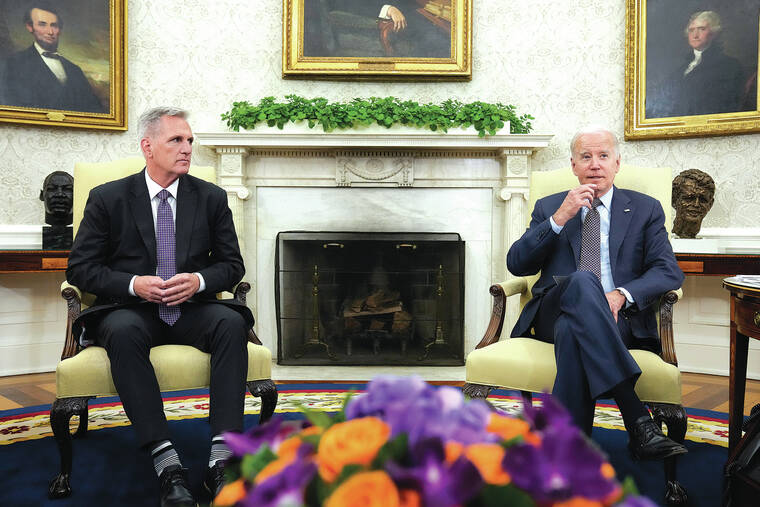Debt ceiling crisis averted for now, but just wait 2 years
(TNS) — The last-minute deal to raise the debt limit averted a U.S. default, but risks making brinkmanship over federal borrowing a seasonal event as lawmakers wage fiscal war in Washington.
The agreement was signed Saturday by President Joe Biden just before a Monday default deadline, capping weeks of bitter negotiations that strained Treasury markets. It will cost taxpayers as investors absorb a new normal.
ADVERTISING
The U.S. has had an extraordinary ability to borrow at low cost because global financial markets treat Treasury securities as the benchmark for risk-free debt. Yet at points in May in the heat of the negotiations, investors demanded yields surpassing 7% on Treasury bills maturing around the projected default date, treating them as similar to junk debt. The idea that repayment of U.S. Treasury debt would be a major battleground in the clash between political parties was jarring the first time Congress neared the fiscal cliff, when Tea Party Republicans employed the strategy in 2011. The newly empowered GOP House majority of that time made holding up a debt limit increase the focal point of their campaign to wring broad fiscal changes from President Barack Obama. A deal was struck no more than 48 hours before the default date. And even though the U.S. didn’t miss a payment, the drama prompted a downgrade in the nation’s credit rating and a stock market slide.
The latest drama has spurred Biden and other Democrats to search for ways to remove the threat of debt default from Washington’s partisan fights. “This debt limit makes no sense at all. We ought to get rid of it,” Representative Jim Clyburn, Democrats’ former No. 3 House leader, said Thursday on Bloomberg Television’s “Balance of Power.”
Biden seemed to be warming to the option on Sunday as he announced the debt deal with McCarthy after weeks of fitful negotiations.
“I am exploring the idea,” Biden said.


